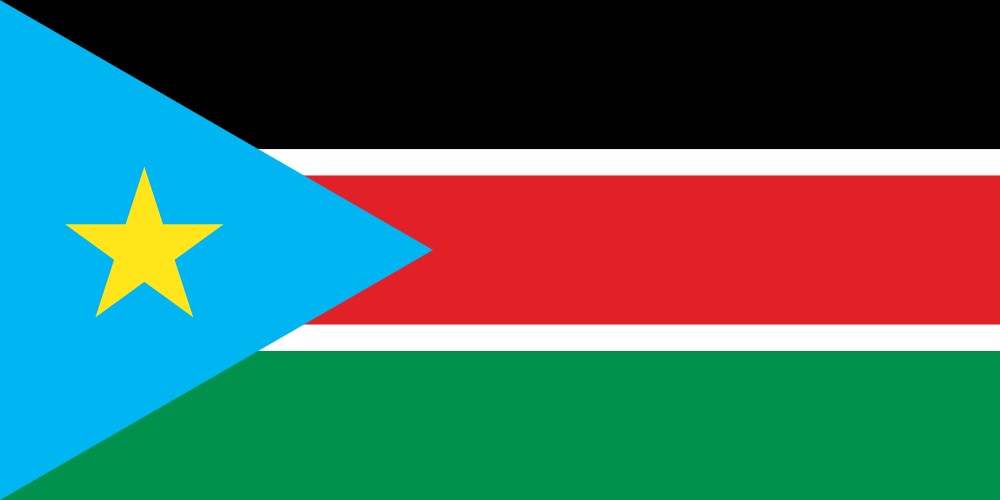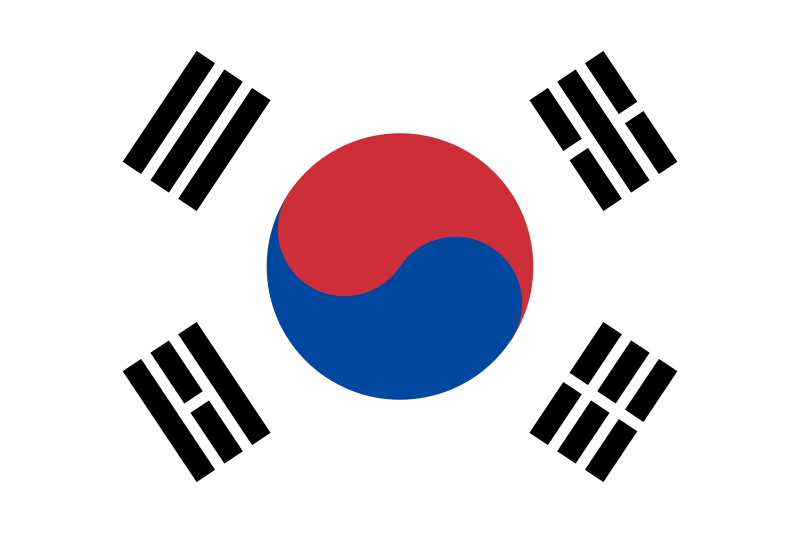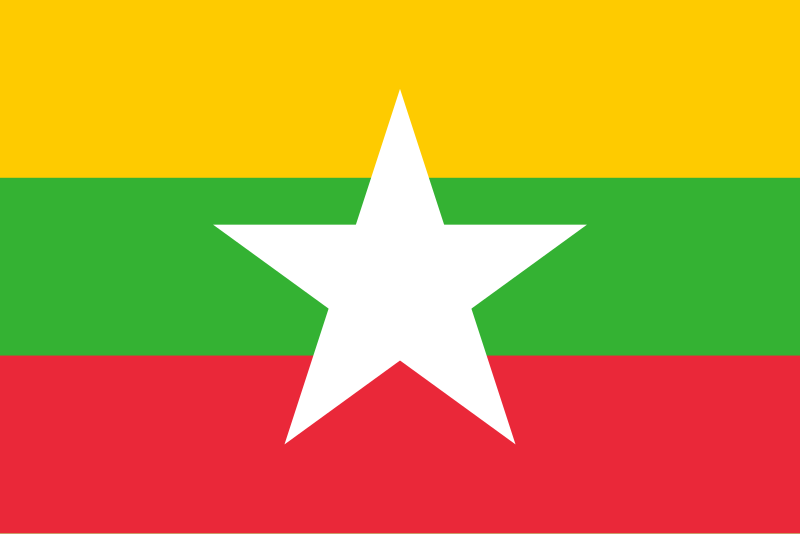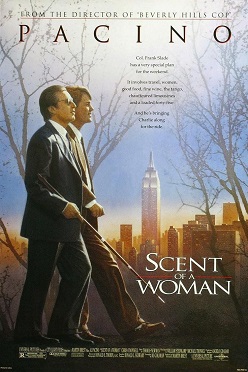Landschlacht, Switzerland, 6 February 2017
“We the willing, led by the unknowing, are doing the impossible for the ungrateful.
We have done so much, with so little, for so long, we are now qualified to do anything, with nothing.” (Konstantin Josef Jirecek)
Could this statement be strangely appropo if we viewed it from the perspective of women?
There is a scene in Back to the Future, Part 2 that has remained with me many years after the film.

Doctor Emmett Brown, after discovering that their arch-enemy Biff has somehow disturbed the timeline and has turned the Hill Valley they once knew into a dystopia, says to his youthful companion Marty McFly:
“Time-traveling is just too dangerous.
Better that I devote myself to study the other great mystery of the universe: women!”
In my humble opinion…the study of women is a far more dangerous endeavour!
And it is in this spirit of danger and caution that I discuss this humble man´s opinion about the other half of humanity that, in the words of Mao Zedong, “hold up half the sky”.

Mao Zedong (1893 – 1976)
Sometimes our thinking is clouded by false assumptions…
A father and son are driving home.
They are involved in a bad car accident and are rushed to hospital.
Both are in critical condition.
A surgeon comes to the Emergency Room to try to save the boy, takes one look at the patient and says:
“I can´t operate on this boy.
He´s my son.”
But the boy´s father is lying on a trolley next to him.
What is the surgeon talking about?
Depending on the country, the surgeon is probably the boy´s mother.
There are moments, when I consider these modern times, that I am happy at the progress humanity has made.
More and more women are thought of as not just wives and mothers, but as leaders, activists, experts, major contributors to society and not only as passive onlookers to history or merely victims.
Women not only have a huge influence within the community.
Women create the community.
It was the women of South Sudan who organised the 1999 Wunlit Dinka-Nuer Peace and Reconciliation Conference to bring to an end seven years of hostilities between the Dinka and Nuer peoples.

Above: The flag of South Sudan
They began by sharing with each other their stories of the pain and suffering that both peoples had inflicted upon each other.
Determined to help their people find a way to make peace, they laboured for months to build an entire village of 150 houses, a large meeting hall and a well for water and the provision of food for 1,500 people.
A living community, a village of peace…Wunlit.
The Dinka-Nuer Covenant guaranteed peace between the tribes who agreed to share rights in water, fishing and grazing land.
In spite of the ongoing violence, it is Israeli and Palestinian women who are working together through Jerusalem Link to convey a join vision of a just and lasting peace.
Jerusalem Link is the coordinating body of two independent women’s centres: Bat Shalom (The Jerusalem Women’s Centre in West Jerusalem) and Marcaz al-Quds al-Nissah (The Jerusalem Centre for Women in East Jerusalem).
Above: Pictures of Jerusalem
Though each organisation is autonomous and takes its own national constituency as its primary responsibility, Jerusalem Link promotes a joint vision of peace, democracy, human rights and women’s leadership.
Vandana Shiva is a leading Indian researcher and activist on biodiversity, conservation and the protection of people’s rights from threat to their livelihoods and the environment.

Above: Dr. Vandana Shiva (b. 1952)
Her father a conservator of forests and her mother a farmer with a love for nature, Vandana has a bachelor and master of science from Punjab University in Chandigarh, a master of arts in the philosophy of science from the University of Guelph and a PhD from London, Ontario’s University of Western Ontario.
Dr. Shiva later went on to interdiscplinary research in science, technology and environmental policy at the Indian Institute of Science and the Indian Institute of Management in Bangalore.
Dr. Shiva has spent much of her life in the defence and celebration of biodiversity and indigenous knowledge, working to promote agricultural productivity, nutrition and fair incomes for farmers.
Dr. Shiva has her share of critics, and I confess that I need more information regarding the legitimacy of some of her claims, but there is no denying the impact she has had.
Her first book, Staying Alive, helped redefine perceptions on Third World women and she has founded and has actively participated in women’s rights, environmental development and anti-genetic engineering protests.
Dr. Shiva continues to play a major role in the global ecofeminist movement and she suggests a more sustainable and productive approach to agriculture can be achieved through reinstating a system of farming in India that is more centred on engaging women.
Dr. Shiva believes that ecological destruction and industrial catastrophes threaten daily life and that the maintenance of these problems has become the responsibility of women.
Recognition of the rights and the contributions of women has come relatively late in humanity´s history.
In 1910, the Socialist International meeting in Copenhagen established an International Women’s Day to honour the movement for women’s rights and to assist in achieving universal suffrage for women.
The first International Women’s Day was held on 19 March 1911.
In 1913, as part of the peace movement on the eve of World War I, Russian women observed their first International Women’s Day on the last Sunday of February 1913.
In 1917, with 2,000,000 Russian soldiers dead in the War, Russian women again chose the last Sunday in February to strike for “bread and peace”.
Four days later, the Czar was forced to abdicate and the new Provisional Government granted women the right to vote.
That Sunday fell on 23 February on the Julian calendar then used in Russia, which was 8 March on the Gregorian calendar used elsewhere.
International Women’s Day (8 March) has become a global opportunity to celebrate acts of courage and determination by ordinary women in the advancement of women’s rights.

Above: German poster for International Women’s Day, 8 March 1914
If you want to know how women’s lives are changing around the world, then visit the Global Sisterhood Network. (www.global-sisterhood-network.org)

This organisation monitors electronic and print media for developments likely to have a direct impact on women’s lives, including developments in agriculture, economics, employment, environment, health, law, militarism, politics, technology, trade and science.
How does the Global Sisterhood Network describe itself?
“The GSN provides regularly updated information including critical comment and displays of newspaper and journal articles that reinforce patriarchy / misogny, but have attracted sparse attention and / or comment as the world moves closer to un-democracy.”
Florynce Rae Kennedy, prominent civil rights activist and pro-choice campaigner, once famously said:
“If men could get pregnant, abortion would be a sacrament.”
In response, Maurice and Charles Saatchi, advertising gurus, sprang to public attention with a poster of a pregnant man, saying:
“If this could happen to you, you’d be more careful.”
The world looks different from male and female perspectives, especially when it comes to aggression and warfare.
The architects of the Iraq War on both sides were all men.
Would the War had even happened had they all been women?
Since 1985 the Guerilla Girls have been reinventing feminism. (www.guerillagirls.com)

They produce posters, stickers, books, printed projects and public demonstrations to expose sexism and racism in politics, the art world, film and culture at large.
Dubbing themselves “the conscience of culture”, the Guerilla Girls “believe feminism is a fundamental way of looking at the world and recognising that half of us are female and all of us should be equal.”
“It’s a fact of history that for centuries women have not had the rights and privileges of men.
It’s time for that to end.
Despite the tremendous gains of women over the last hundred years, misogyny – the hatred or hostility towards women as a whole – is still rampant throughout our culture and in the larger world.
We think that is the number one reason women need feminism.”
Above: International Women’s Day rally, Dhaka, Bangladesh, 8 March 2005
And how are women treated unequally?
Women have not achieved total equality with men in any country.
More than 866 million women live below the poverty line.
Women make up 2/3 of all poor people.
More than 20,000,000 women are refugees.
Women make up more than 75% of the world’s total of refugees.
More than 86,000,000 girls are not in school, 2/3 of all those in the world denied education.

Above: Women’s rights advocate for equality in education and 2014 Nobel Peace Prize winner Malala Yousafzai (born: 1997)
Women worldwide earn about 3/4 of the pay of men for the same work.
In the 20th century only 24 women were elected heads of state or government.
In the United Nations less than 10% of the highest-ranking diplomats are women.

Since the Nobel Prizes were founded in 1901, only 12 women have been awarded the Nobel Prize for Peace.

Above: Medallion picturing Alfred Nobel
Of the 204 Nobel laureates in physics, only two have been women.
The first and best-known, Marie Curie, was included only because her husband, Pierre, insisted that she, too, be awarded for their joint work.

Above: Marie Sklodowska Curie (1867 – 1934)
When women are included on any list of hires, speakers or awardees, the people responsible often point with pride to their generosity as if including women on a list is indicative of performing a charitable service rather than that the women are deserving of recognition for their achievements.
Yet, women contribute more than $15,000,000,000 worth of unpaid work in homes and communities around the world.
Throughout the world women find themselves struggling between the biological imperative of producing and raising children and their desires to become more than simply wives and mothers.
Let´s look at a country in which I once lived…
A low birthrate is one of South Korea’s most urgent socio-economic challenges.

Above: The flag of South Korea
Amid rising costs of living and education, women are increasingly moving into the job market, but they often find it all but impossible to keep their careers and raise children.
Many women still feel pressure to quit their jobs once they become pregnant.
For many women working in the private sector, especially those employed at smaller businesses, an extended parental leave with the option of returning to work remains a dream.
Even if a woman returns to work, finding affordable day care centres can be difficult.
At home, looking after a child is still largely considered a woman’s job even when she works outside the home.
So with so many pressures at work and at home, many women choose to remain single or marry late and have, at most, only one child.
South Korea’s fertility rate, one of the world’s lowest, is well below the “replacement level” that allows a society to maintain its population without immigration.
Some folks predict that South Korea will become extinct if it continues to maintain its current birthrate.
For years, local officials in South Korea have tried ever more inventive plans to encourage women to have babies.
They have offered generous maternity leave policies, cash allowances and boxes of beef and baby clothes to families with newborns.
On Thursday 29 December 2016, the South Korean Ministry of the Interior published an online birth map that uses shades of pink to rank towns and cities by the number of women of childbearing age.
The birth map was intended to “promote competition” among towns to produce more babies.
The reaction to this map was so overwhelmingly negative, especially among women, that the website was shut down within hours of its introduction.
An angry blogger wrote:
“Are women livestock?

Above: Swiss Braunvieh cow with cowbell
The Ministry counted fertile women like they counted the number of livestock.
Did the Ministry think that men would flock to a town with more childbearing age women?”
Han Chang-min, spokesman for the opposition Justice Party:
“It’s truly deplorable, because the map shows that the government considers women as nothing but baby producing machines.
It shows the government sees birthrates just as a woman’s problem.”
According to Marie Stopes International, an organisation that promotes safe motherhood across the world:

Every minute of every hour of every day, more than 380 women become pregnant.

Half of these pregnancies are unplanned or unwanted.
“Abortions happen, every day.
Making them illegal doesn’t stop women needing, or wanting them, or inflicting abortions on themselves.
Even if you don’t agree with abortion, it is not morally acceptable to force your views upon others.” (Leslie Spillane, Cork, Ireland)
Every year, more than 600,000 women die from complications during pregnancy and childbirth.
That is the equivalent of a ship the size of the Titanic sinking every day with no survivors.

Above: RMS Titanic leaving Southampton, 10 April 1912
Maternal deaths account for 30% of all deaths among women of reproductive age.
And women worldwide remain in all sorts of situations where they are in physical danger of attack.
In the US alone, women and girls represent 86% of all victims of sexual violence.
Bangalore, India, 1 January 2017

Above: The flag of India
Thousands of people have gathered on two roads in the city centre to celebrate the New Year.
The police on the scene – more than 1,500 officers – are quickly overwhelmed as men begin molesting women and shouting lewd remarks.
The crowd becomes a stampede as men take their chance to grope and fondle any nearby women they can find in a mass frenzy of molestation and unwelcome physical contact.
Rajnath Singh, India’s Home Minister, told reporters that “protecting the modesty of women is the duty of state government”.
But some elected officials reacted to the events in Bangalore by pointing the finger at Westernising customs rather than the assailants.
Abu Azmi, an assemblyman from Maharashtra State, complained that “the more nude the woman looks, the more fashionable and modern she is called.”
The government official responsible for keeping order on Indian streets, the Home Minister for the state of Karnataka, Mr. Parameshwara said that the women were to blame because of the way they looked and acted.
“Youngsters were almost like Westerners.
They tried to copy the Westerner, not only in their mindset but even in their dress.
So some disturbance, some girls are harassed, these kind of things do happen.”
Once again, the victims are blamed for their assaults, rather than the assailants.
Kabul, Afghanistan, July 2016

Above: The flag of Afghanistan
An unproven accusation of adultery sends a mob chasing after a girl and the young man she had been linked to.
The crowd sets fire to the car in which the couple are found.
They barely escape, but the police are more concerned about the mob’s accusation.
The police chase her down and arrest her hours later.
The teenage girl had barely survived an attempted mob lynching.
“Since there was suspicion of sexual relationship, the police sent the girl to forensic medical for virginity testing.” (Fraidoon Obaidi, chief of the Kabul Police Investigation Department)
Virginity testing is an extremely invasive examination to check whether a woman’s hymen is intact.
A study by Afghanistan’s human rights commission found the justice system still regularly orders female victims of domestic abuse who had sought protection in women’s shelters to go through the procedure.
The Commission calls the examinations “violence against women”.
“The circumstances of virginity testing are never humane.
In conducting virginity tests, no one asks for the consent of the victim.
99% of the virginity tests are conducted by force.” (Soraya Sobrang, Commissioner, Afghanistan Independent Human Rights Commission)
And as I look back at the news events of just the first month of 2017, I remain dismayed and saddened at the ongoing plight of women around the world:
- In recent months, the Myanmar military has entered villages in the northern state of Rakhine shooting at random, setting houses on fire with rocket launchers and systematically raping girls and women.

- Above: The flag of Myanmar
- A film about sex trafficking, I Am Jane Doe, opens in US theatres next month and shines a light on the website Backpage, “the Walmart of human trafficking”, that dominates the online sex trade and is implicated in 3/4 of the reports of child trafficking in the US.

- The MTV series Sweet / Vicious is one of several productions currently prevading US pop culture with tales of rape victims exacting revenge upon their attackers, but do these shows truly reveal rape’s social and psychological consequences or do they trivialise an “eye for an eye” retribution?

- In democracies from Australia to North America and Europe, the pipeline of women ready to step up to the top in politics and business remains thin and is a major topic at the World Economic Forum in Davos.

- Police Now, a diversity initiative financed by the British Home Office and started in 2015, now has more than 150 officers spread out over England, 49% of them women, 18% minorities, as British police seek to diverse a corps often derided as “male, pale and stale”.

- To be a woman in the US is to feel unequal, despite great strides in gender equality, according to National Opinion Research Center about gender in Trump’s America. Being a woman in America means catcalls on the street, disrespect at work and unbalanced responsibilities at home. Girls are taught to aspire to marriage while watching positions of power go to men. American men, however, don’t see things the same way.

- The corporate governance of seven of America’s ten largest institutional investors in stocks are now women. Though concern remains that women are less likely to push greater gender diversity as an issue in discussions with management out of concern they will be perceived to have a feminist agenda, there still exists tremendous potential for women in corporate goverance to make a bigger difference.
- On 21 January, the day after what many had assumed would be the inaugration of Hillary Clinton as America’s first female President, hundreds of thousands of women flooded the streets of Washington DC and in cities across the United States and in a number of cities abroad, in defiance against Donald Trump the man who defeated her. The organisers of the “counter-inaugration” hoped the marches were the kick-off of a sustained campaign of protest and determination to protect women’s rights that Trump threatens. In a show of outrage and despair, the marches brought attention to issues such as abortion, equal pay, sexual assault, police brutality, mass incarceration, voter suppression and environmental protection. The marchers were confronting a President who has appointed only a handful of women in his Cabinet and inner circle, who has pledged to nominate a Supreme Court justice who oppose abortion rights, who has pledged to dismantle the Affordable Care Act (Obamacare) that covers contraception. Total attendance, just in the US, alone easily surpassed one million.

As I look back at the first month of 2017, as I review the research I made for this blogpost, as I reflect on the wonder that is woman from a simple husband’s perspective, I am left with a number of feelings and impressions.
Much like Jack Nicholson’s character in As Good As It Gets, I feel that women have made me want to become a better man more deserving of them.

Above: Film poster for As Good As It Gets (1997)
I am breathless with admiration at the courage, strength, preseverance, passion, compassion, wisdom and beauty inside and out that women possess.
And it astonishes me how unequally and unfairly my gender has been and continues to be towards women.
Why are we this way to the very beings who gave us life itself?
Why this sense of insecurity so many of my gender possesses when it comes to granting the same rights and privileges so many men take for granted?
Are we afraid that the empowerment of women drains the power of men?
Why do so many men assume that a woman’s ability to attract gives them some sort of right to possess and ravage a woman’s body?
When did we forget that knowing a woman is a privilege?

Above: Film poster for Scent of a Woman (1992)
Why do so many men jealously try to dictate to women what their roles should be, how they should dress, who they should have sex with, or whether they should procreate or not?
Why do we force upon women structures and taboos that we would revolt against if they were forced upon us?
Men should not think themselves superior to women, but rather we should consider ourselves complimentary to each other and embrace equality as we cherish our differences.
As difficult as communication can be between men and women, as frustrating as it can be when those we choose to love don’t always do what we would prefer they would do, the freedom and privilege we enjoy for ourselves is also the right of women as well.
Without women sharing our strength and passion in equal but different proportion, the sky above is truly falling.

Above: Apollo 17 photo of Earth from space, 7 December 1972
Sources: Michael Norton, 365 Ways to Change the World: How to Make a Difference…One Day at a Time / Choe Sang-Hun, “South Korea’s effort to promote fertility backfires”, New York Times, 3 January 2017 / Nida Najar, “India official faults dress for attacks on women”, New York Times, 5 January 2017 / Liza Randall, “Why Vera Rubin deserved a Nobel”, New York Times, 5 January 2017 / Zahra Nader and Mujib Mashal, “Virginity tests in Afghanistan defy a ban”, New York Times, 7 January 2017 / Sinead O’Shea, “Ireland is revisiting its stringent ban on abortion”, New York Times, 11 January 2017 / Ellen Barry, “There are no homes left”, New York Times, 12 January 2017 / Nicholas Kristof, “A website peddling girls for sex”, New York Times, 13 January 2017 / Amanda Hess, “Rape, revenge and how we watch”, New York Times, 14 January 2017 / Alison Smale, “Putting more women on a path to power”, New York Times, 17 January 2017 / Prashant S. Rao, “British police look to shed a pale-male image”, New York Times, 18 January 2017 / Claire Cain Miller, “Gender-driven views on equality”, New York Times, 19 January 2017 / Alexandra Stevenson and Leslie Picker, “Wielding power quietly”, New York Times, 19 January 2017 / Susan Chira and Yamiche Alcindor, “Women’s anti-Trump rallies go worldwide“, New York Times, 23 January 2017 / Wikipedia



